|










Tilt Measurement Limited
-
Specialists in Precision Angle Measurement
|

|

Killer Applications
When we talk about our 'killer applications', we mean those where our
customers do their best to kill our equipment with a combination of harsh
environments rough handling and general abuse.
Recorded below are brief details of some of the more memorable, quirky,or
downright difficult situations we or our equipment got involved with.
The 'More Details' buttons link you to the Technical Background behind each application.
While we have lots of customers who live in nice warm laboratories and
treat our equipment with loving care and attention, we have a lot who
don't.
We are proud that our designs survive adverse conditions and
continue to work when they do this kind of thing to them.....
Drop in Sometime!
Electricity Towers like the picture have to survive
wind and ice on the cables which pull on the towers.
The towers are tested by applying simulated loads at the
appropriate angles. Our sensors mounted on the cable
control this angle to high accuracy.
When the tower is tested to DESTRUCTION, the sensor
FALLS up to 100 metres to the ground-a hard knock for
a sensitive piece of equipment.
But our customer just picks up the sensor and starts all over again.
Our sensors are tough, they survive these shocks year in, year out
|
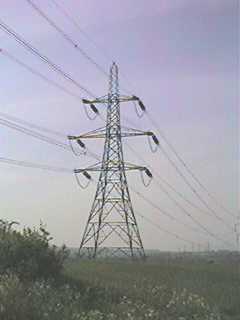
|



|
A Fishy Tale
Using a specially designed sub-miniature sensor, our customer was able to fit them INSIDE of fish. Then using remote telemetry, he could follow the fish around the sea and know if they were swimming up, down or straight and level.
We understand this is a good thing to know if you're trying to estimate if there really are plenty more fish in the sea, or if overfishing has reduced fish stocks to a dangerously low level.
While the sensor does not see rough treatment in this application, the design problems of making the sensors with small size and low power consumption made it one of of our trickier design tasks.
|


Oil on troubled waters
Another marine application where the rough conditions
really test the toughness of our sensors.
The picture shows an enormous oil production platform under construction.
Our sensors were used in a surveying system, to make sure the concrete
towers were cast so that they were in position to better than 100
millimetres of design target.
Used throughout the construction phase as well as during positioning during
sinking down to the sea bed, the sensors thrived on a corrosive environment
of sea water concrete dust, pressure and rough handling.
In the picture there is as much of the structure below the sea surface as
you can see above it.
|
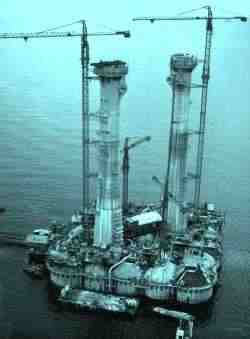
|


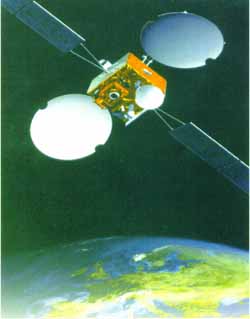
|
Reach for the stars
Our tilt sensors need Gravity to work so they have limited use in outer space.
But spacecraft are built with very sophisticated guidance systems to ensure they point in the right direction.
This is often done with gyros which need careful testing here on Earth before launch.
This testing is done in a Space type environment-under high vacuum sometimes hot sometimes very cold.
Our specially developed high vacuum resistant sensors are used in these spacecraft test chambers from -40 to +70 degrees Celsius and still give high accuracy readings to help
make better spacecraft.
|


Arctic Wastes
Global warming means the ice caps may be getting thinner so that wave action can break up the ice sheet and generate really big icebergs.
To understand the way this happens you need to measure very small tilting movements in the ice, and you have to make the measurements in the extreme cold of the arctic and antarctic regions.
A strong accurate sensor which doesn't seize up when the temperature drops is needed here, and reliability is essential to avoid those inconvenient service calls to the south pole.
|

|



|
Piling on the agony
Drilling big holes into rock is done for all sorts of reasons-making foundations for bridges or big buildings, boreholes for water extraction and so on... all involve some of the worst operating conditions for sensors and electronic equipment. It's hot, wet and the shock and vibration levels are very high indeed.
We put sensors down the borehole into these conditions so that the holes are drilled at the correct angles called for in the Civil engineer's or Architect's design
|


Radiation Hazards
Handling nuclear material, you don't get a second chance to get it right, so only the very best most reliable sensors are specified.
Our premium radiation-resistant sensors have been tested to exposures of
5 MegaRad
-very fatal to humans but not to the sensor.
Even so our
Ultra-careful customers use triple (or higher) redundancy in nuclear fuel transfers or storage bunker monitors.
|

|



|
Gunner's Droop
Firing trials on a large calibre gun showed that as the gun barrel heats up, it droops enough for the aiming to be significantly affected.
To make this measurement one of our tilt sensors was fixed to the gun barrel. Then some hundreds of rounds were fired, stopping at intervals to
measure the Gun barrel attitude.
Typically the sensors experienced repeated 400g shocks as the barrel recoiled and then had to make measurements to arc seconds of accuracy a few moments later.
The results of these tests lead to tank guns having insulation overcoats on the barrels to
equalise the temperature and improve their accuracy.
|


Crane Cant Tilt
As part of the safe load indicating system of rail mounted cranes the cant angle of the chassis must be measured. The sensor is mounted below the resilient suspension and so experiences the full shock and vibration of the bogies-(repeated shocks of more than 250g). Because it's a safety system, reliability of the must be high and the failure modes must be fail-safe.
The equipment is in service with Railtrack
|
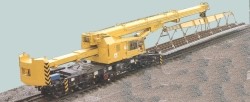
|


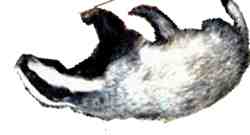
|
Dead Badger Switch
How could we finish without a brief mention of our Dead Badger Switch?
This is really a motion sensor which remains inactive while kept in continuous motion, attached to a live badger.
When the badger version of the Grim Reaper comes by, and all motion ceases, a switch closes and signals this unhappy event.
Why bother??
Good question.
Something to do with evaluating badgers as spreaders of disease,...
but by changing the algorithm which analyses the motion, you can apply the principle to anything from sophisticated burglar alarms to watching over personnel working alone in remote places.
|



Last Updated: 8th February 2022
ã
2022 Shavex Systems
|